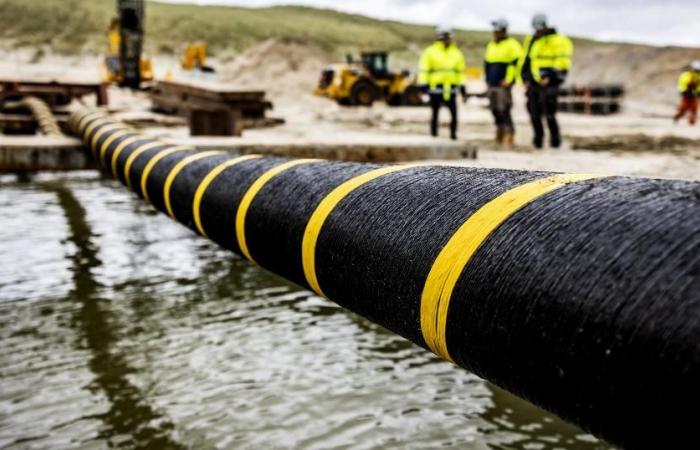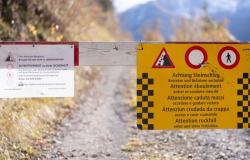A project for submarine cables carrying electricity between Ireland and North America is under development. The objective is to strengthen the energy security of NATO member states by establishing a physical link between its two blocs.
This ambitious Atlantic interconnection plan would make it possible to send electricity produced by renewable sources in both directions almost continuously by sharing wind and solar production produced in both Europe and North America. North Sea wind turbines could one day supply New York with electricity.
This energy would be carried by cables, the diameter of which would not exceed that of a pizza, which would extend 3,500 kilometers across the Atlantic Ocean.
External content
This external content cannot be displayed because it may collect personal data. To view this content you must authorize the category Social networks.
Accept More info
“A bridge between the European and American continents”
It is no coincidence that Ireland is at the heart of this project. After Iceland, it is the closest European country to the American coast. “We are truly the physical bridge between the European and American continents,” says Irish MP Cathal Berry in the RTS show Tout un monde.
“It has happened on numerous occasions over the last century that Ireland has made the link with North America, for transatlantic cables, but also in relation to data storage and, initially, for telecommunications” , he continues. “So it’s very good to maintain this link.”
A lot of our energy is wasted, because we don’t have that interconnectedness. There’s no point having all that energy if it’s wasted
Cathal Berry also points out that Ireland has an abundance of renewable energy, “notably thanks to wind, but also waves”. “But a lot of our energy is wasted, because we don’t have that interconnectedness,” he adds. “There’s no point in having all this energy if it’s wasted.”
Strengthening energy security
On his site internetthe project is presented as a way to “empower communities, stimulate economic growth and mitigate the effects of climate change”.
It would also strengthen energy security among NATO members, “at a time when energy is exploited by hostile regimes”. The founders of the Atlantic interconnection project have also assured that no Russian or Chinese financing will be accepted.
The costs of constructing the cable are estimated between 20 and 40 billion euros. The work could take up to 15 years.
>> Read also: Submarine cables, a field of tension for great powers
Neutrality not called into question
Ireland’s involvement in this project therefore raises certain questions. The country has in fact always refused to join NATO, of which the United Kingdom was a member. But the origin of Irish neutrality actually dates back essentially to its struggle for independence from its English neighbor, explains Cathal Berry.
You can still be a neutral, militarily non-aligned country and cooperate with your neighbors and friends.
“We’ve been stuck in a big empire for a while, so we value our independence very much and we’re proud of it,” he says. “But you can still be a neutral, militarily non-aligned country and cooperate with your neighbors and friends. And that’s what’s happening here.”
If the Irish elected official believes that this type of informal cooperation “will probably increase significantly in the years to come”, he does not however envisage Ireland joining NATO. Despite everything, the founders chose to call the project the North Atlantic Transmission One Link (NATO-L), thus using the same acronym as the English designation for NATO.
It may just be a coincidence, but one thing is certain: Russia’s invasion of Ukraine has reshuffled the diplomatic cards. Other historically neutral European states such as Ireland have in fact reviewed their positioning and have since decided to join the Atlantic Alliance, like Sweden and Finland.
>> Read also: Finland and Sweden, from historic neutrality to the arms of NATO
Clémence Pénard/edel






